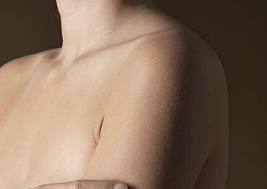SHOULDER
 The shoulder is a ball and socket joint. The ball portion of the joint consists of the rounded head of the upper arm bone (humerus), and the socket portion is made up of a depression (glenoid) in the shoulder blade. The ball (humeral head) fits into the socket (glenoid). The joint is surrounded and lined by cartilage, muscles, and tendons that provide support and stability. The shoulder’s construction allows for the rotation of the arm in all directions.
The shoulder is a ball and socket joint. The ball portion of the joint consists of the rounded head of the upper arm bone (humerus), and the socket portion is made up of a depression (glenoid) in the shoulder blade. The ball (humeral head) fits into the socket (glenoid). The joint is surrounded and lined by cartilage, muscles, and tendons that provide support and stability. The shoulder’s construction allows for the rotation of the arm in all directions.
Many patients seek medical attention for shoulder pain, and a common diagnosis given is “shoulder bursitis†or “shoulder tendinitisâ€. Shoulder bursitis and rotator cuff tendinitis, are both just a way of saying that there is inflammation of a particular area within the shoulder joint that is causing pain and discomfort. Shoulder bursitis and a rotator cuff tear are different problems, and although related, the treatment is different for each condition.
Shoulder bursitis is inflammation around the rotator cuff tendons. A rotator cuff tear is an actual tear within the tendons. A sign that differentiates these problem areas is the strength of the rotator cuff muscles. Typically, these injuries have been brought about by high impact activities from contact sports like football and rugby, or from heavy use in overhead activities, such as tennis, golf, or baseball. In either case, both types of injuries produce pain and limit range of motion.
Common symptoms include:
- Pain with overhead activities (arm above head height)
- Pain while sleeping at night
- Pain over the outside of the shoulder/upper arm
Shoulder Replacement
In shoulder replacement surgery, the damaged shoulder is resurfaced and replaced with prosthesis. When both sides of the joint are resurfaced, it is total shoulder replacement; when only the ball is involved it is a partial shoulder replacement.
With a total shoulder replacement, the prosthesis consists of:
- The ball, which consists of a stem with a rounded metal head
- And the socket, which consists of a smooth plastic concave shell that matches the round head of the ball
Depending on your situation and diagnoses, reconstructive surgery of the shoulder joint could be performed arthroscopically. When possible arthroscopic surgery is preferred by our surgeons because traditional surgical techniques tend to produce a longer recovery period and less range of motion after rehabilitation. This type of arthroscopic surgery allows for less invasive and more predictable reconstruction. With arthroscopic techniques, patients tend to experience less pain, disability and stiffness.
If you require total shoulder replacement, you should take these points into consideration to ensure the success and longevity of your shoulder replacement:
- Avoid repetitive lifting
- Avoid “jamming†activities such as hammering
- Avoid “impact†activities such as boxing, rugby or football
- Avoid any physical activities involving quick stop-start motion, twisting or impact stresses on the shoulder
- Avoid pushing heavy objects
It’s is always important to stay healthy and active, but consult with your surgeon before beginning any new sport or activity, to find out what type and intensity of sport or activity is appropriate and how it can affect your new shoulder.
Recovery
The type of surgery you have, and your doctor’s recommendations, will determine how soon you can begin using your shoulder after elbow surgery. Arthroscopic surgical patients may go home in a few hours after surgery, but will need to arrange to have someone drive them home because the pain medications and anesthesia are likely to make them sleepy. Total shoulder replacement patients could remain in the hospital for one to three days.





